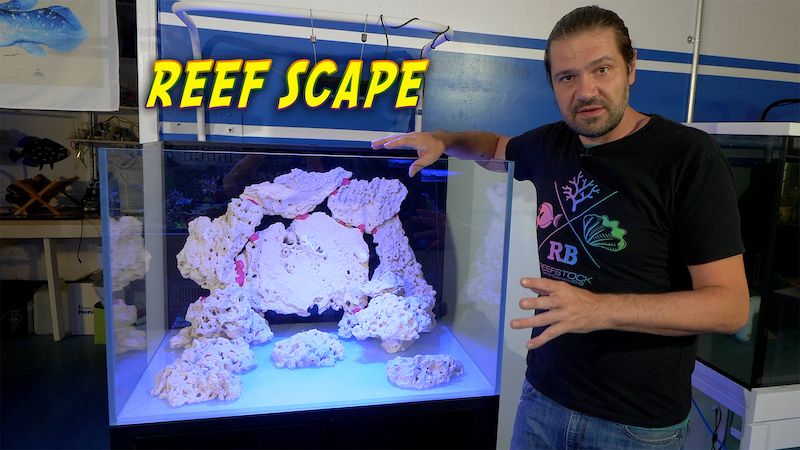Aquascaping a brand new reef tank is at once one of the most exciting and also stressful periods of setting up a new coral aquarium. This is the period where the particular arrangement of rocks will determine the general look of your reef tank for months, perhaps years to come.
It’s clear to see how laying out all your aquascaping materials and letting your creative juices flow can be very fun, exciting and engaging. This is the point of building a reef tank which has the potential to bring out your inner child and creativity with an assortment of irregularly sized legos and if you’re like us, you usually have no idea how it’s going to turn out.
This is also the stressful part because you have no idea how it will turn out, even if you have a general idea of what kind of general aquascape you are hoping to achieve. There’s no telling how the rocks will fit together, whether you’re going to find that perfect groove to hold and support the next rock ‘just so’.
No matter what kind of tank you’re aquascaping, most reefers will make two common mistakes: use too much rock, and aquascape the rock without enough consideration for the future corals. Both of these things can lead to issues, especially blocking water movement throughout the aquarium in the case of using too much rock, and not leaving enough room for corals to actually grow.
With our highly vertical rock wall nearly hugging the back of the Australian reef build, we probably overcorrected for both of these common issues. This 85 gallon display contains only about 40 pounds of Marco dry shelf rock, and there is so little ‘structure’ in the reef scape itself that it’s really going to spur us to add corals rather quickly.

While this is the archetypal aquascape that we tell most people to avoid, this reef tank is going to be highly specialized rock wall for lower light, lower energy corals that are adapted to lower light. We plan to populate this reef wall predominantly with Australian corals like scolies, bowerbanki, Micromussa, Lords, supported by a few chalice corals and blastomussa.
This empty tank with a highly vertical back wall is admittedly quite goofy and unconventional in appearance, but admittedly it already looks a lot better with water in it. We’ve since got the tank filled with water, salted up, and letting the biology get a small start until we literally test the waters with one small indicator coral.



